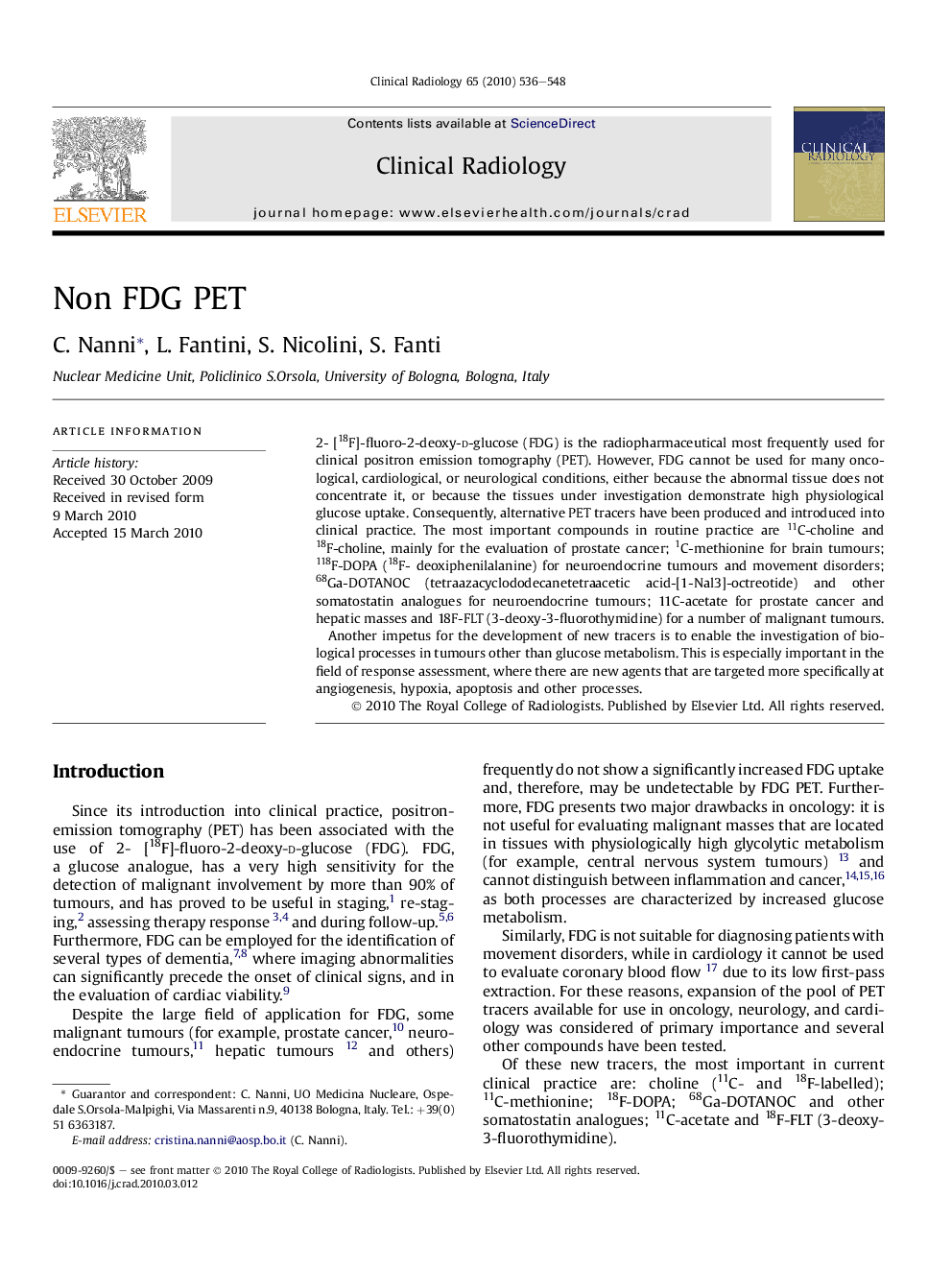| Article ID | Journal | Published Year | Pages | File Type |
|---|---|---|---|---|
| 3982394 | Clinical Radiology | 2010 | 13 Pages |
2- [18F]-fluoro-2-deoxy-d-glucose (FDG) is the radiopharmaceutical most frequently used for clinical positron emission tomography (PET). However, FDG cannot be used for many oncological, cardiological, or neurological conditions, either because the abnormal tissue does not concentrate it, or because the tissues under investigation demonstrate high physiological glucose uptake. Consequently, alternative PET tracers have been produced and introduced into clinical practice. The most important compounds in routine practice are 11C-choline and 18F-choline, mainly for the evaluation of prostate cancer; 1C-methionine for brain tumours; 118F-DOPA (18F- deoxiphenilalanine) for neuroendocrine tumours and movement disorders; 68Ga-DOTANOC (tetraazacyclododecanetetraacetic acid-[1-Nal3]-octreotide) and other somatostatin analogues for neuroendocrine tumours; 11C-acetate for prostate cancer and hepatic masses and 18F-FLT (3ٰ-deoxy-3ٰ-fluorothymidine) for a number of malignant tumours.Another impetus for the development of new tracers is to enable the investigation of biological processes in tumours other than glucose metabolism. This is especially important in the field of response assessment, where there are new agents that are targeted more specifically at angiogenesis, hypoxia, apoptosis and other processes.
